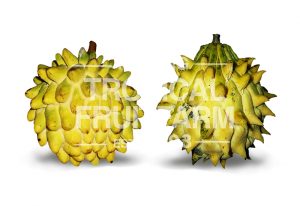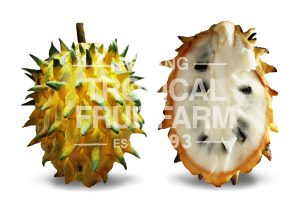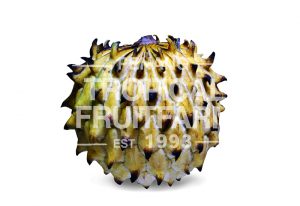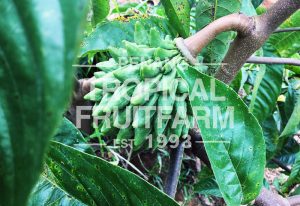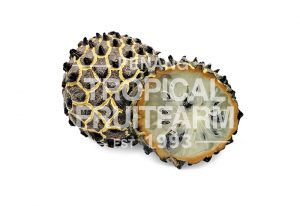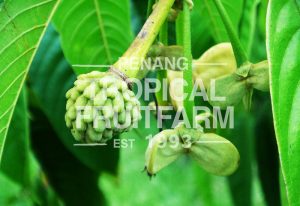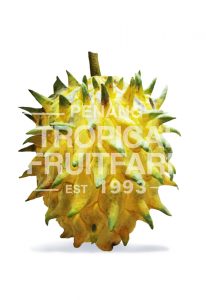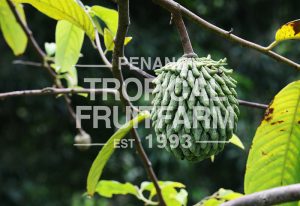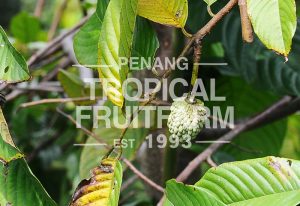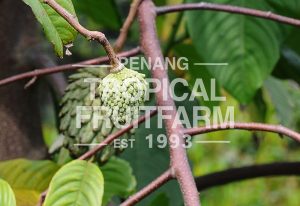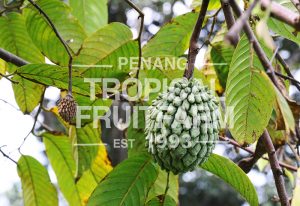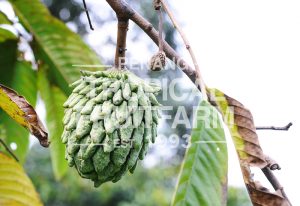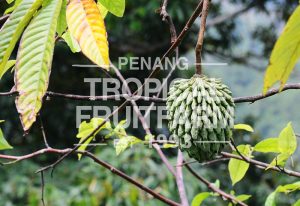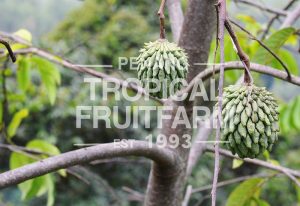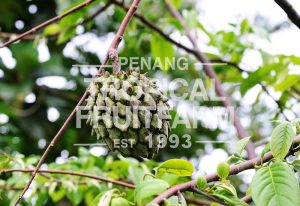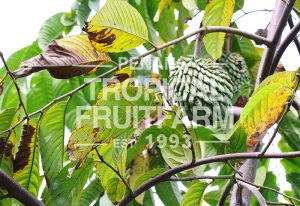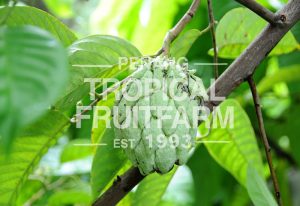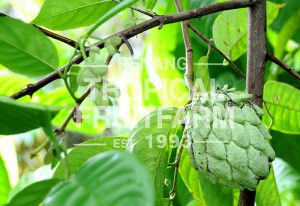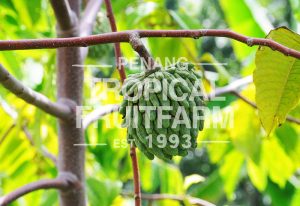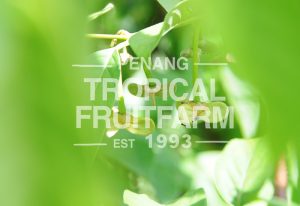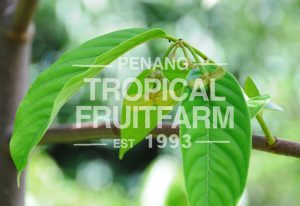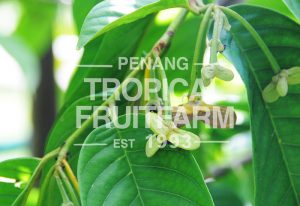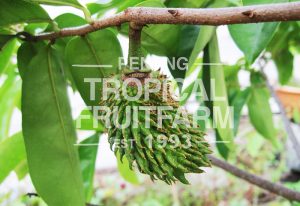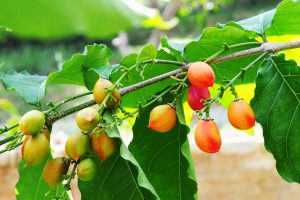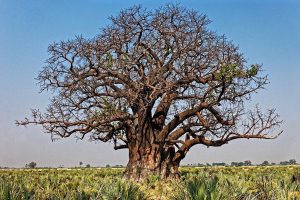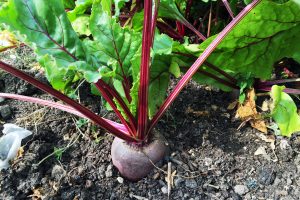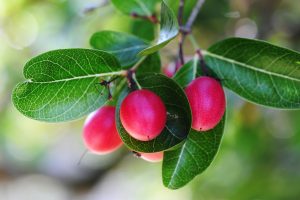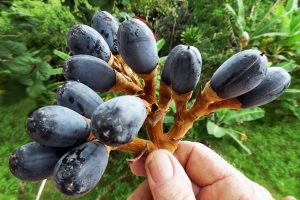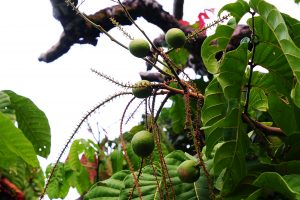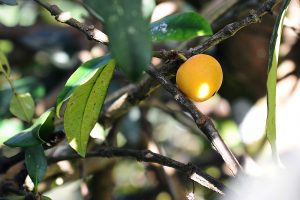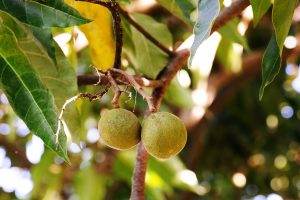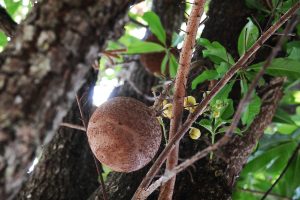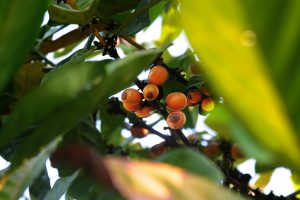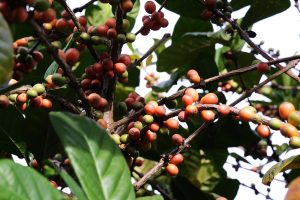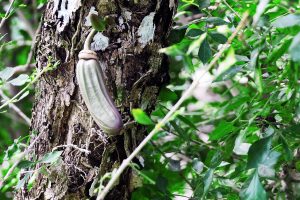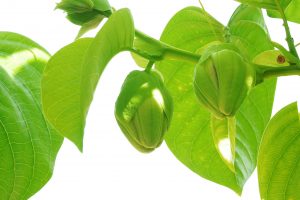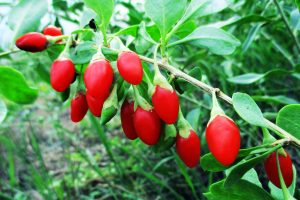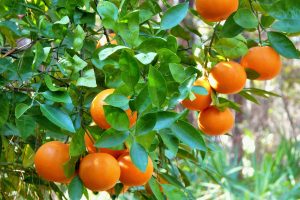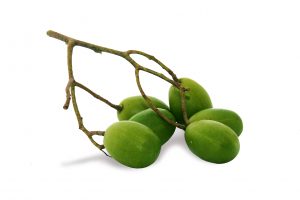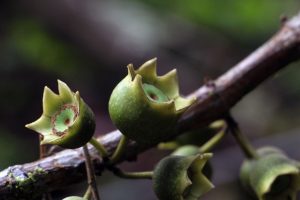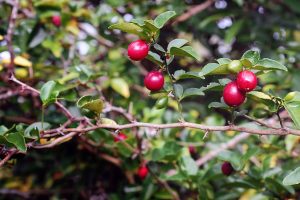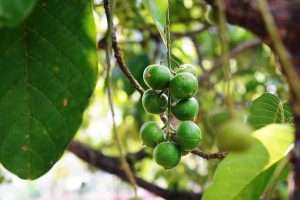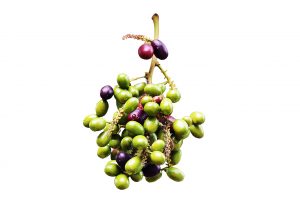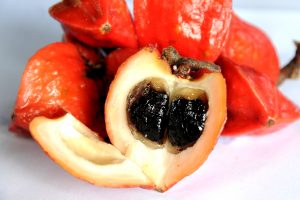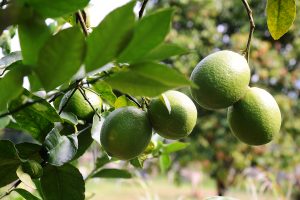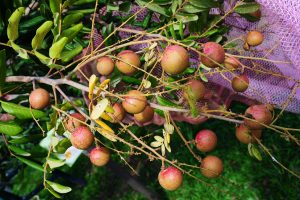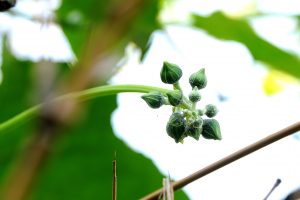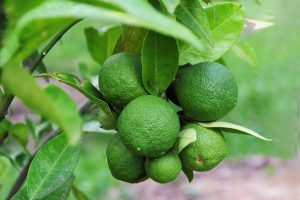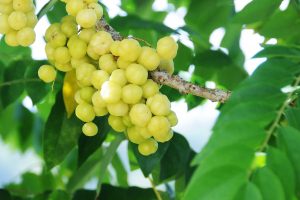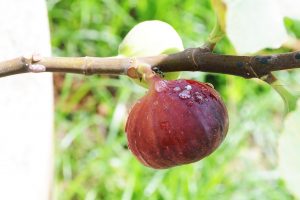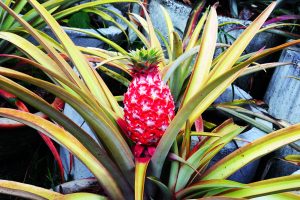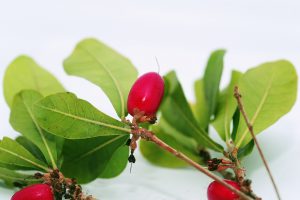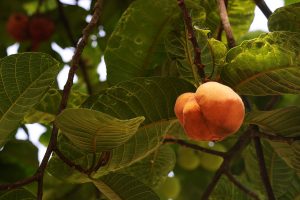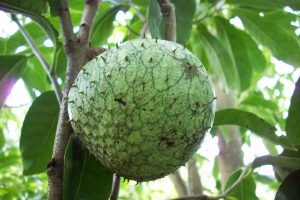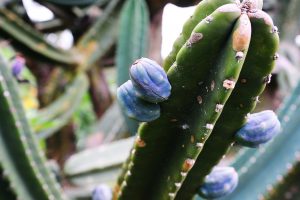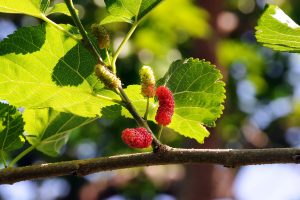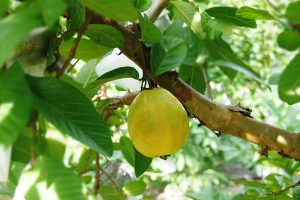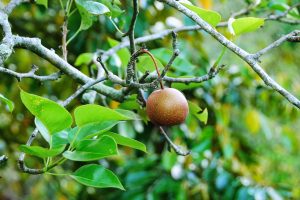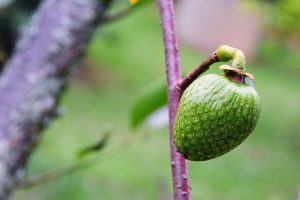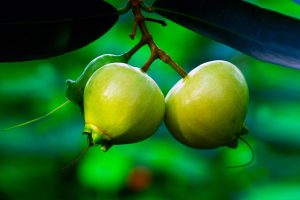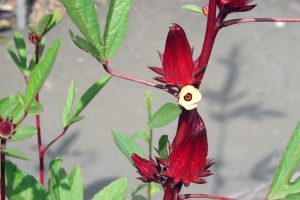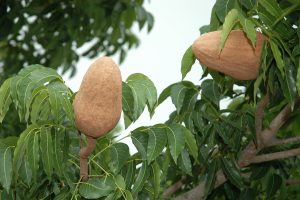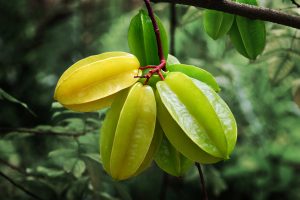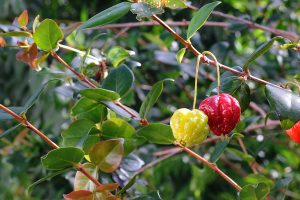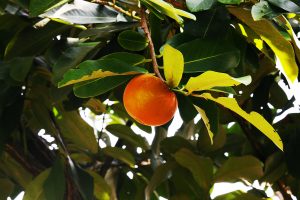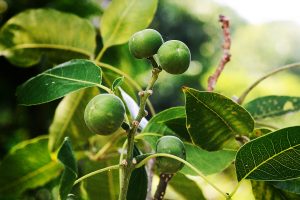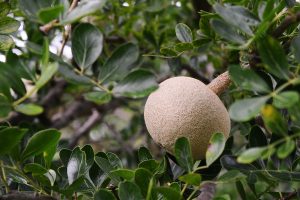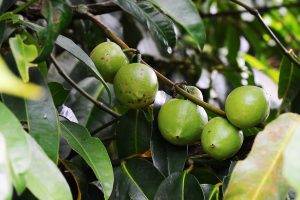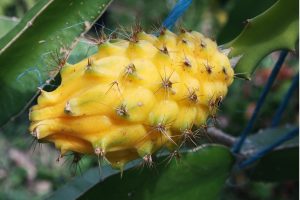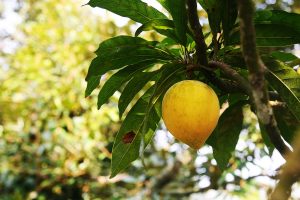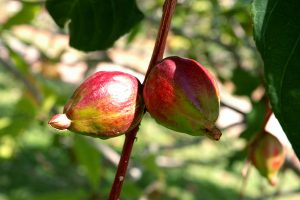| Origin | Wood apples are native to regions of Asia and Southeast Asia and have been growing wild since ancient times. |
| Description | The fruit is round to oval, 2 to 5 in (5-12.5 cm) wide, with a hard, woody, grayish-white, scurfy rind about 1/4 in (6 mm) thick. The pulp is brown, mealy, odorous, resinous, astringent, acid or sweetish, with numerous small, white seeds scattered through it.. |
| Growth Habitat | This fruit is native to India but is also found in Sri Lanka, Thailand, and various other regions in the southern part of Asia. |
| Foliage | Deciduous (often evergreen in tropical climates),alternate, dark-green,leathery, dotted with oil glands and slightly lemon-scented when crushed together |
| Flowers | Dull-red or greenish to ½ in. (1.25 cm) wide,borne in small, loose, terminal or lateral panicles; usually bisexual. |
| Fruits | Wood apple pulp has a sour, funky taste that is delicious with a touch of sugar in desserts, or alternatively, with warm spices for savoury dishes. |
| Harvest | A bounce test helps determine a ripe fruit. Drop it on a hard surface — if it bounces, the fruit is unripe. A ripe fruit will fall with a thud to the ground. Fully ripe wood apples have a light brown to a toffee brown tone flesh. |
| Soil | Wood apple or Bael trees can thrive in wide range of soils. However, A well- drained, light sandy loam soil is best. |
| Pruning | Pomelo and other citrus fruit trees usually do not require heavy pruning at regular intervals. If the tree looks too dense, you can thin the foliage a bit, in order to promote air circulation. Also be sure to remove the suckers growing from the root stock. |
| Fertilization | A practice in Nakon Prathom, Thailand is to apply 5 kg complete fertilizer per tree per year split into 6 applications or every 2 months. Foliar fertilizer is also applied every new flushes. In the last application before harvest, NPK combination of 13-13-21 is used to improve fruit taste. |
| Propagation | The wood apple is generally propagated through seeds though seedlings will not bear fruits until at least 15 years of age. Multiplication may also be done by root cuttings, air-layers, or by budding onto self-seedlings to induce dwarfing and precociousness. |
| Nutritional Properties | Wood apple has crude fibre, calcium, phosphorus, iron, zinc, copper, manganese, sodium, potassium, manganese and Vitamin C among others. |
| Health Benefits | Wood Apple : 1. Boosts energy · 2. Treats piles and ulcers · 3. Supports digestive health · 4. Cleanses your body. |
| Commercial Uses | The pomelo can be used anywhere where grapefruit is suggested. The peel is sometimes used to make marmalade, can be candied and sometimes dipped in chocolate or, in China, is used to stir-fry with pork. They make various medicaments from the seeds, flowers, matured peel and slices of young fruit by usually drying them up. The Malays eat the fruit to treat abdominal pains and phlegm. The leaves are boiled into a lotion and applied on swellings and ulcers. Flowers are used to extract perfume. Timber from pomelo trees are used in making tool-handles. |
| Food Suggestion | It is pulp lifted out and is eaten raw with or without sugar, or is blended with coconut milk and palm sugar syrup and drunk as a beverage, or frozen as an ice cream. It is also used in chutneys and for making jelly and jam. |

